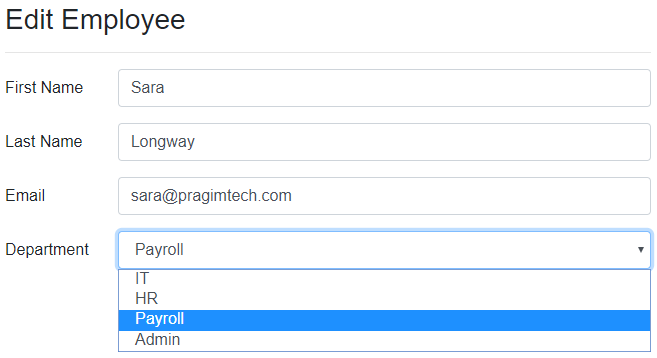To create a new item, issue an HTTP POST request to the URI /api/employees. Posting to the collection /api/employees makes sense because, to the collection of employees we want to add a new employee.

ASP.NET Core REST API - HTTP POST Example
Code Explanation
It is the POST request that is used to create a new resource, in our case a new employee. This is the reason CreateEmployee() method is decorated with the HttpPost attribute.
EmployeesController class is decorated with ApiController attribute. This attribute allows the data from the request to be mapped to the employee parameter on CreateEmployee() method.
Either this ApiController attribute is required or the method parameter must be decorated with [FromBody] attribute. Otherwise, model binding will not work as expected and the employee data from the request will not be mapped to the employee parameter on the CreateEmployee method.
The injected EmployeeRepository instance adds the new employee to the SQL Server database.
When a new resource is created the following 3 things usually happen
- Return the http status code 201 to indicate that the resource is successfully created.
- Return the newly created resource. In our case, the newly created employee.
- Add a Location header to the response. The Location header specifies the URI of the newly created employee object.
CreatedAtAction method helps us achieve all the above three things. We are using the nameof operator instead of including the method name (GetEmployee) in a string. This is a good a practice, because if we later change the name of the method and forget to change it here, the compiler will generate an error.
In the request body, if we do not include a value for a specific property of the employee. That property will be set to null or default value depending on the datatype.
In the request body, if we include a property that does not exist on the employee object, it will be lost. This is the behaviour we want. If the request includes unnecessary or additional data, simply ignore it.

No comments:
Post a Comment